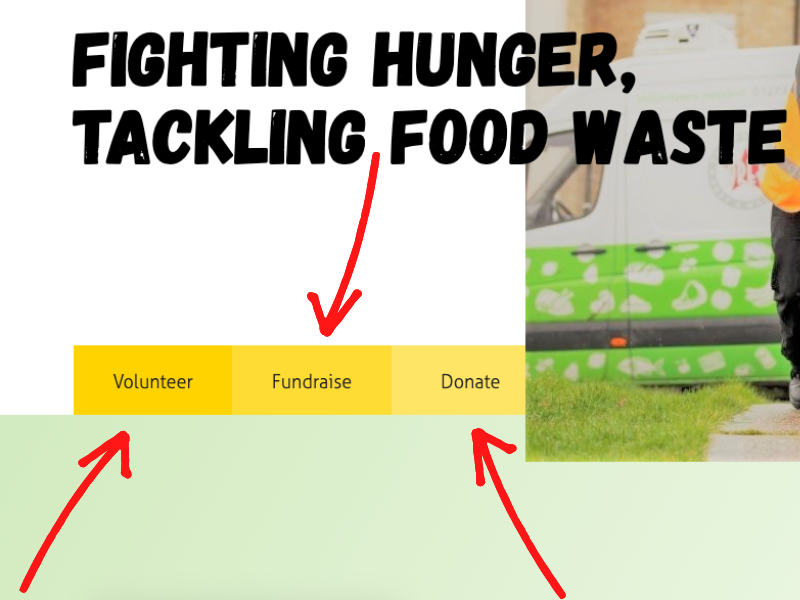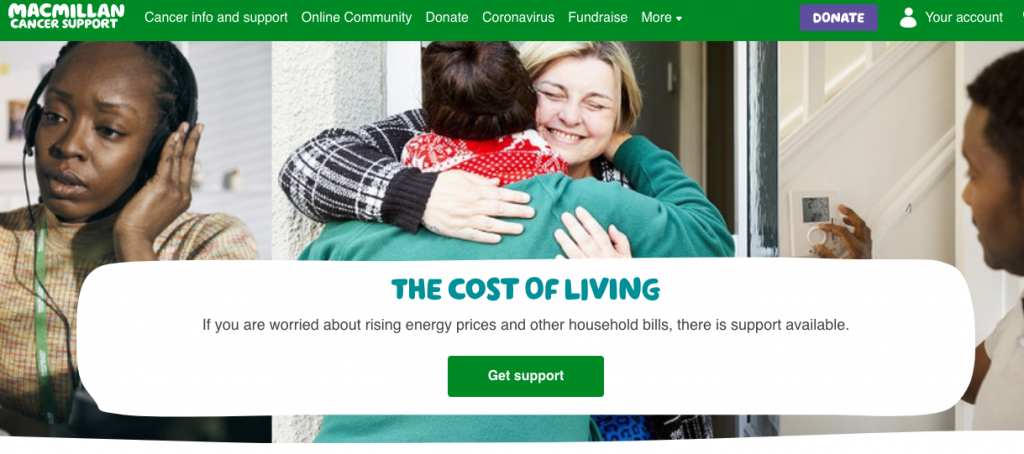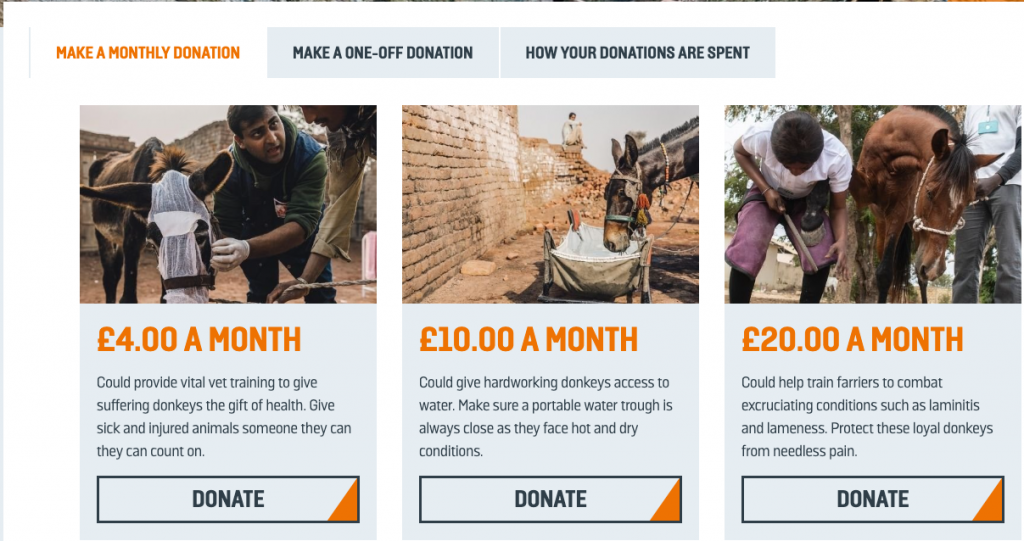At the hub of any charity marketing strategy is its website. Your website is essential for amplifying your mission, encouraging donations and attracting volunteers.
With your website at the centre of all your non-profit marketing campaigns, it is vital that you optimise its performance in order to maximise its value. The most well-planned social media marketing campaign will fail if your website is not up to scratch.
Many of the fundamentals of a great website are the same whether you are a non-profit or a private entity. However, charity marketing has its own set of challenges – donating and purchasing are two different actions with very different motivations. This article explores four areas that you must address to ensure that your website supports your charity’s objectives.

Before you consider these areas and any related activity, it is important that you understand what objectives you want your website to fulfill or support and also how you are going to measure the results.
1. Keywords and search terms
Keywords are the backbone of all websites and should form a key part of your charity marketing strategy. Keywords are the terms that people enter into search engines to find websites like yours, and it is important to thoroughly research these terms. Once you find them, ensuring that you include them in your copy will help bring that traffic to your site. When deciding what keywords to target, the first place to look is your own website. What is your website about? What keywords will bring supporters directly to the most relevant pages? For example, some of the words that you include on your ‘donate’ pages will be different to those on your ‘volunteer for us’ pages.
Another important place to look for keywords is your competitors’ websites. Longer-standing charities, or those with bigger budgets, may have already researched and optimised their site for keywords that work well within your sector.

There are various tools that can help you find relevant keywords and search terms. Ubersuggest is a useful tool for this. The valuable element of this software is that it tells you how competitive its keyword suggestions are. It’s often beneficial to use some less competitive keywords. However, it’s only beneficial if there are plenty of monthly searches using those terms. Ubersuggest will tell you roughly how many searches there are for each term. However, the free version of Ubersuggest only allows three searches per day.
Google Ads also has a keyword planner tool that gives you this information. It’s free to use and searches are unlimited – but it takes a little more getting used to than Ubersuggest.

You can also use the good old Google homepage. Enter a generic keyword and hit the space bar instead of enter – and Google will show you suggested variations for your terms.
2. Your charity’s mission, objectives and priorities
Decide on your key calls to action, based on your charity’s overall strategy. You need to prioritise objectives for your website and lay out your calls to action accordingly.
This page looks great but all of the calls to action are in the same place and are given the same priority. This can lead visitors to your website to take no action at all.

For most charities – but not all – the number one objective is a donation ask. After all, without donations, your charity won’t exist. Your ‘donate’ button should be clear and bold and should not be overshadowed by other text or objects. Many charities that have two or three calls to action on the homepage will make the ‘donate’ button a different colour to the others. If donations are your priority, you should have a ‘donate’ button on every page.

You need to say clearly what your charity does. It needs to be obvious to potential supporters and it’s especially important for SEO. If you run a donkey charity then you must say on your homepage that you are a charity that helps donkeys. Otherwise, when I search online for “donkey charity”, how will search engines know that your website is what I am looking for? If you don’t say on your website what you do, then Google doesn’t know. Many website owners have minimal text on their homepage because it looks neater and because modern web design platforms have this type of design as default. However, a good, keyword-rich paragraph or two will help your SEO.
Remember that text in images cannot be read by search engines.
3. Donation page
It is likely that at least one charity marketing campaign will drive traffic directly to your ‘donate’ page. On your ‘donate’ page, you need to remind your supporters why they are donating. Adding some key statistics is a good way of adding detail about your charity’s activity without a lot of distracting text.

Also, telling people how their money might be used is a tried and tested way to help supporters to understand how their donation makes a difference.

Use Paypal or a similar one-click payment system. Research tells us that what you lose in Paypal fees, you gain in extra donations. People using a mobile device are often put off by having to enter their full card details. Every organisation should have a one-click payment option. The majority of visitors who leave a page, intending to come back later, simply don’t – and then that potential donor is lost forever
There should be no distractions on your donate page. If you give people the opportunity to click elsewhere, they will.
You should also ask for as little information as possible throughout the payment process. Once again, the more work your potential donors have to do, the more likely they are to leave without completing the donation.
4. Images
Your images are one of the most persuasive and useful tools in your charity marketing toolkit, and your images will no doubt form a central part of your branding and communication strategy. Carousels or slideshows seem like a great choice for showing more images or presenting more detail about your charity’s activity. However, carousels are generally cumbersome and will slow your website down. They are rarely a good idea.


It is important to show emotive images of the people, animals or objects your charity helps. If you help people or animals, the best and most effective images show eyes looking at the camera. This engages the viewer and invites empathy
Always remember to check your images on a mobile device. You may find that rendering for mobile viewing brings text over the eyes in your images or cuts them off at a crucial point.
What next for your charity?
Charities often work with limited budgets and so it’s important that every channel you invest in provides a sufficient return and that it helps you meet your objectives. Optimising these areas of your website will help to ensure that it achieves those objectives.

However, it’s important to remember that your website is a work in progress. Make sure that you research your keywords regularly and that you keep your website up to date. Be consistent with your content across all your channels, including your social media and any offline presence. Keep your website as lightweight as possible and do an audit from time to time so as to get rid of unnecessary pages. And last but by no means least, make sure that your website strategy includes testing absolutely everything on mobile devices. According to Statista, most website traffic comes from mobile phones and so your website must be fast and easy to navigate for mobile users.
At Mouthy Marketing, we have years of proven success helping charities like yours. Get in touch to see how we can help you get more traffic and secure more donations. Or if you’d just like a chat!


